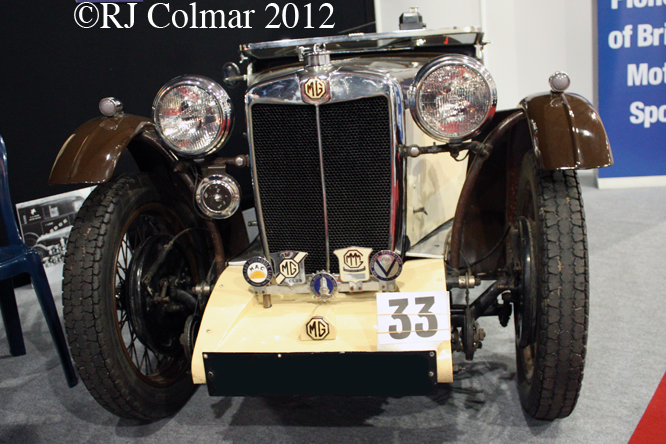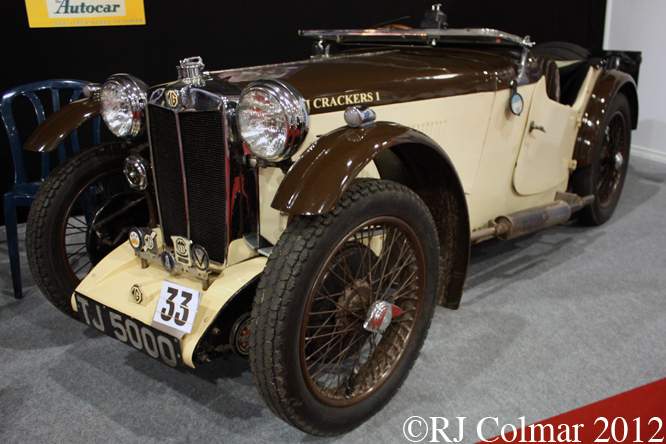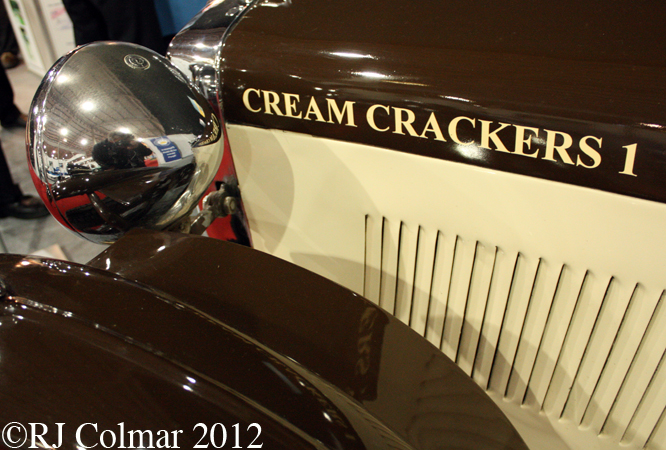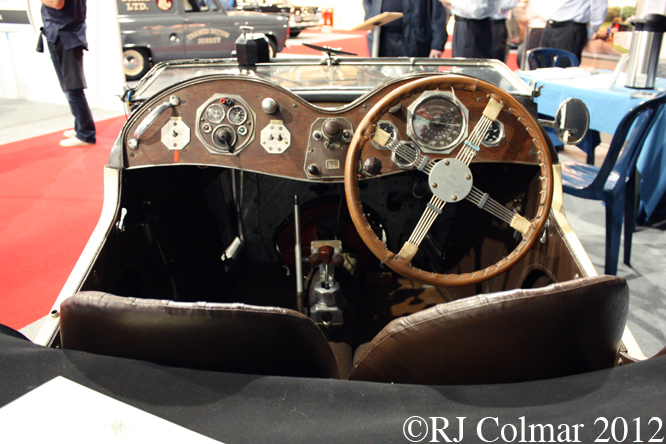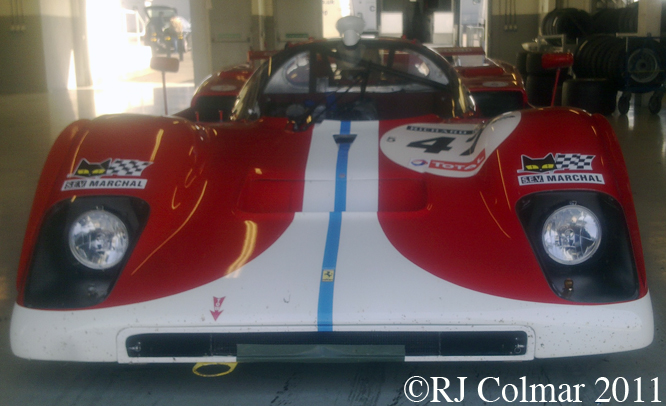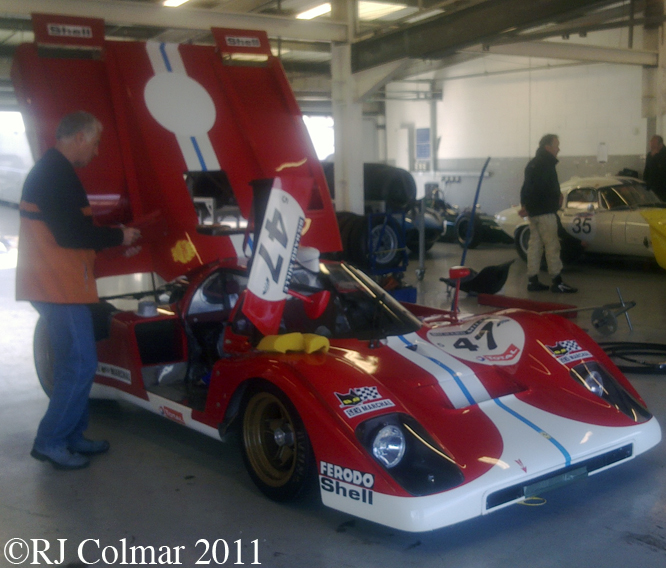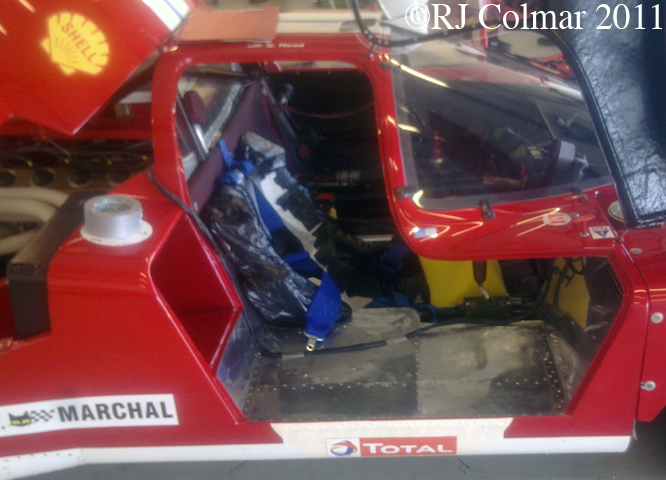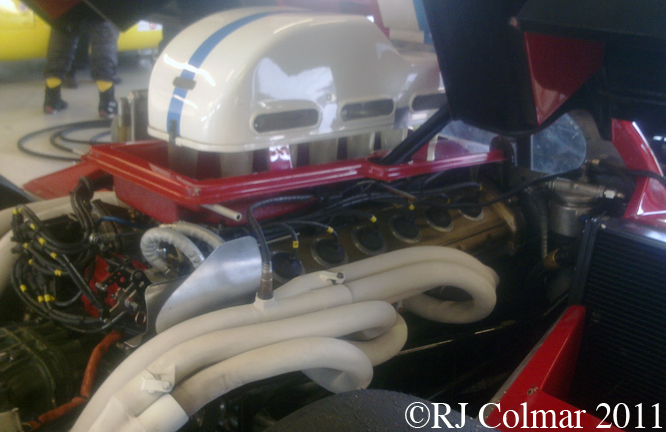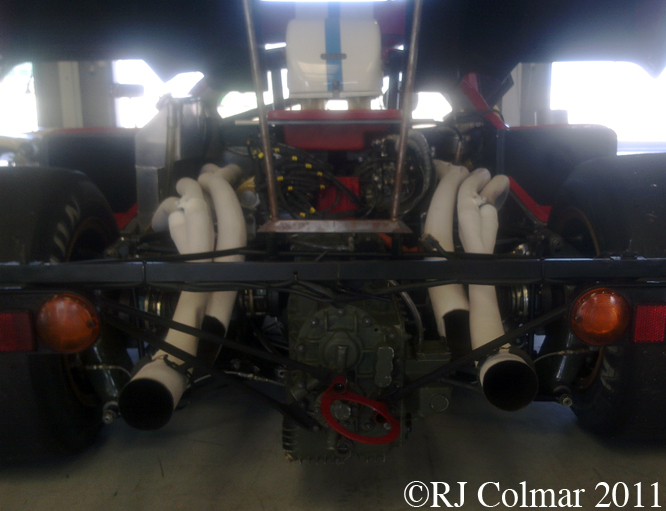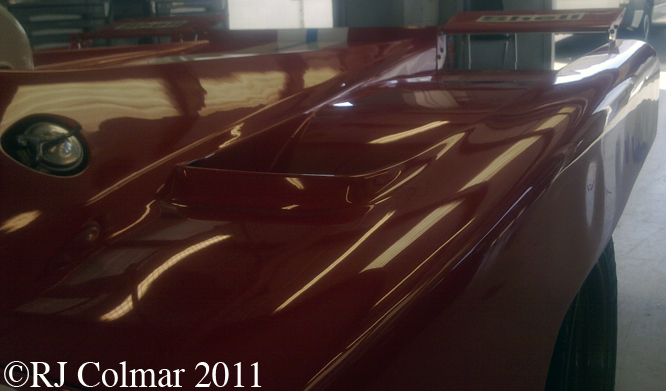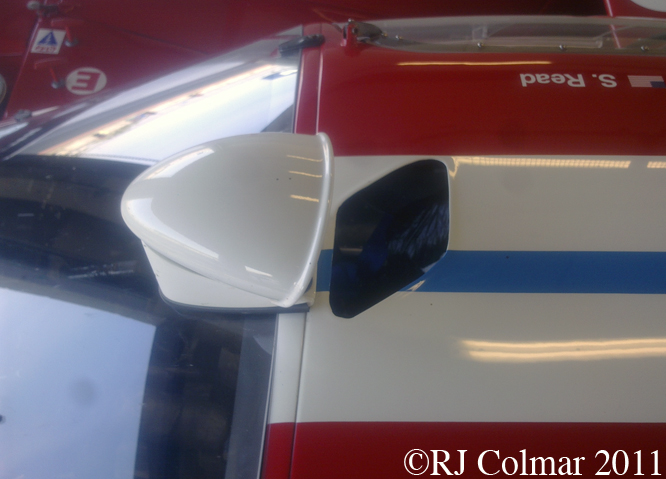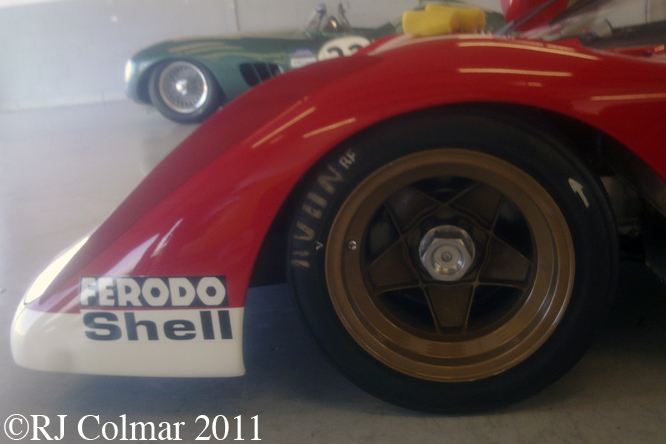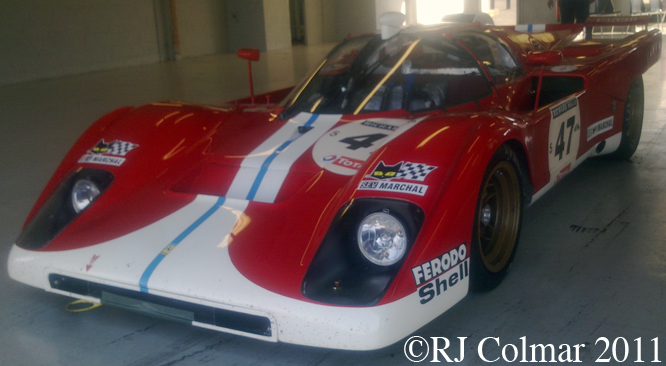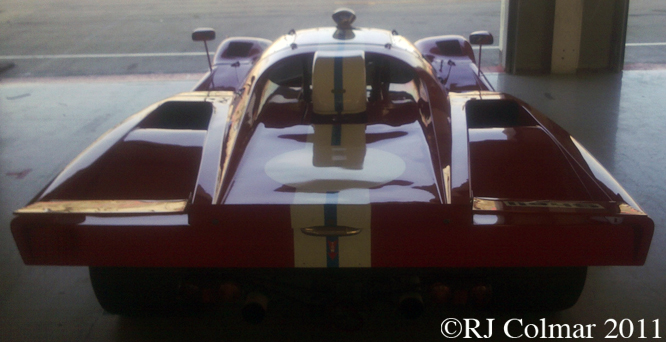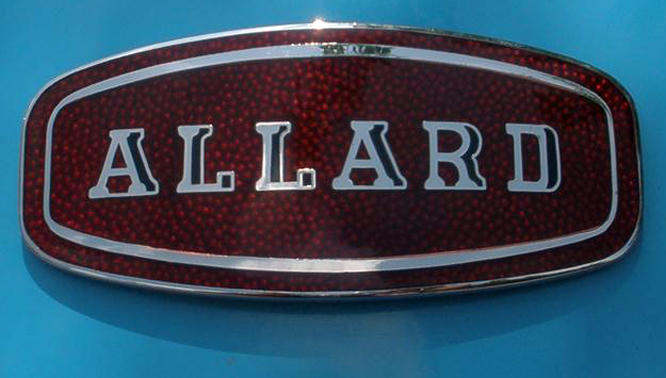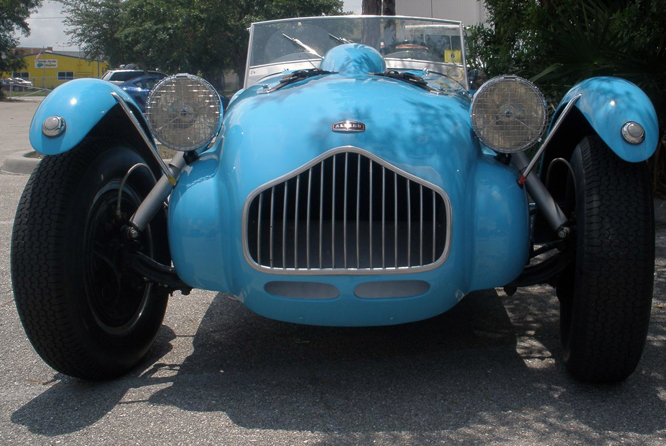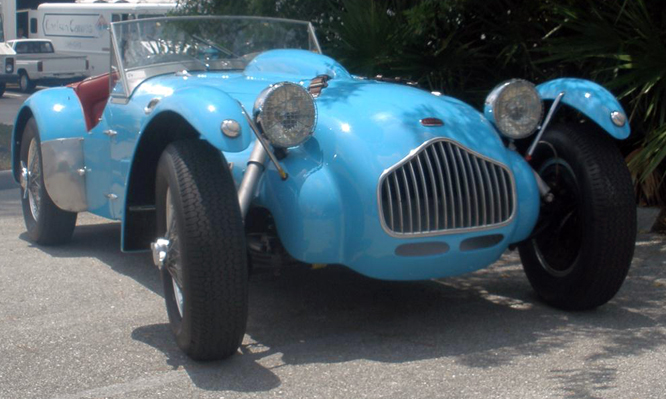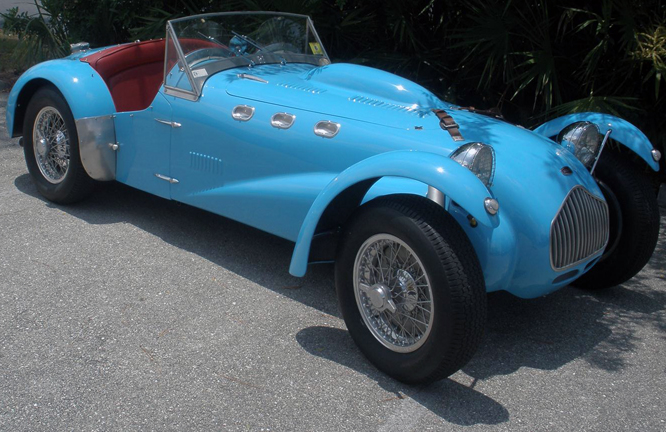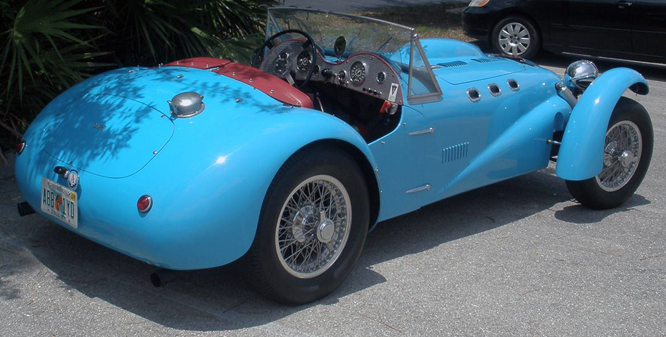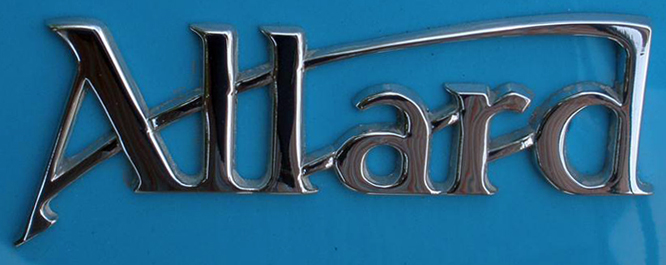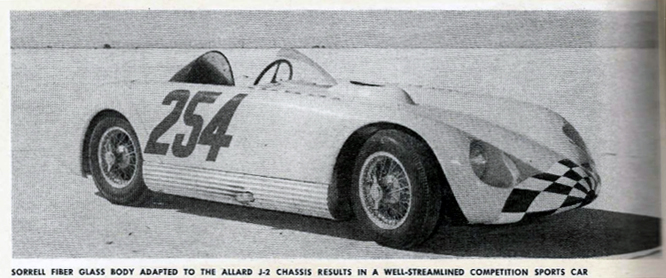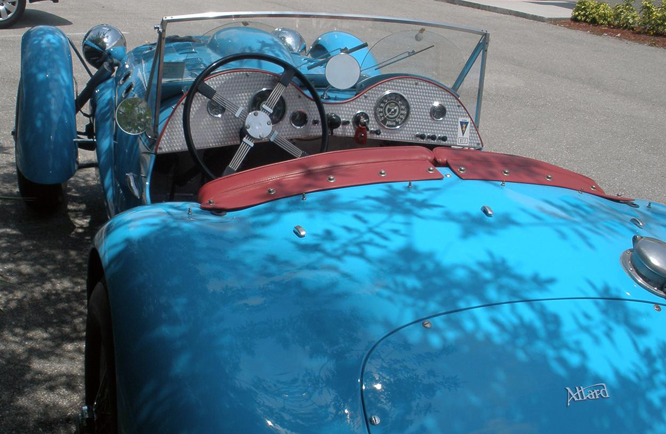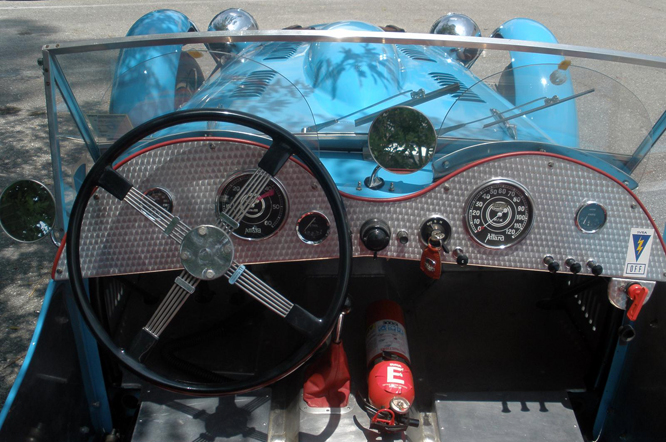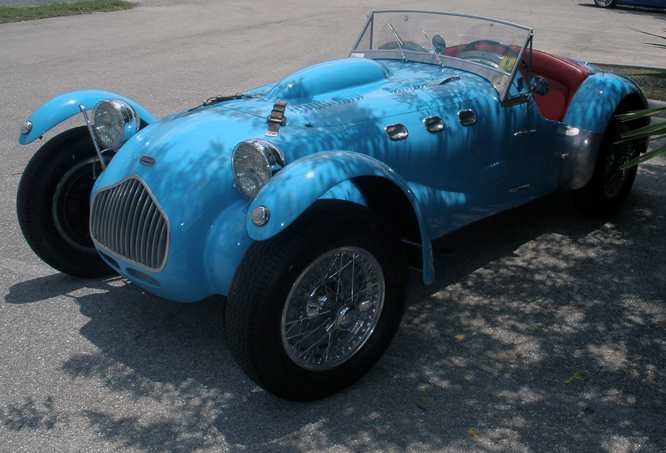Half brothers John and Richard appear to have been born in 1910 and 1912 respectively to Vary who married Richards father Richard (Snr) Bolster in 1911 the same year in which she and John’s father were granted a Decree Absolute. Richard (Snr) was killed in action in 1917 while serving with the rank of Major in the Royal Field Artillery. During the 1914 to 1918 Great War Vary, who was very interested in cars and motoring, is said to have driven her own Napier and a Mercedes as part of her contribution to the war effort. After the war Vary Bolster is said to have driven a 3 litre Bentley and spectated at Brooklands events organised by the BARC who’s strap line ran “The right crowd and no crowding”.
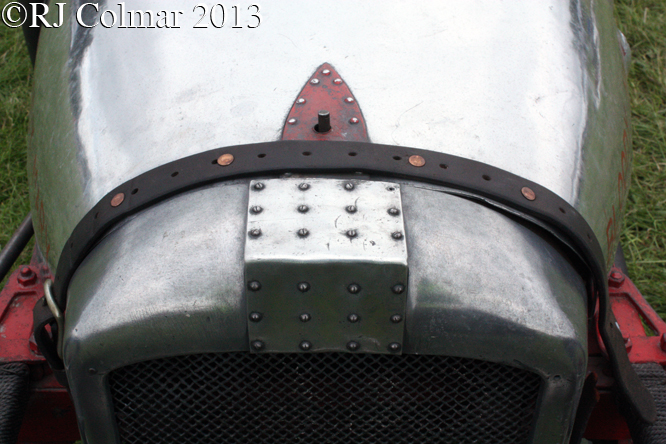
While still at school John and brother Richard set about building a special with the object of “driving around a field as dangerously as possible”. To build the tapered from the front to rear chassis the boys fashioned three longitudinal chassis rails from ash and joined them together with with steel brackets to two cross members front and rear. It would appear the most sophisticated tool at the boys disposal was a hand drill.
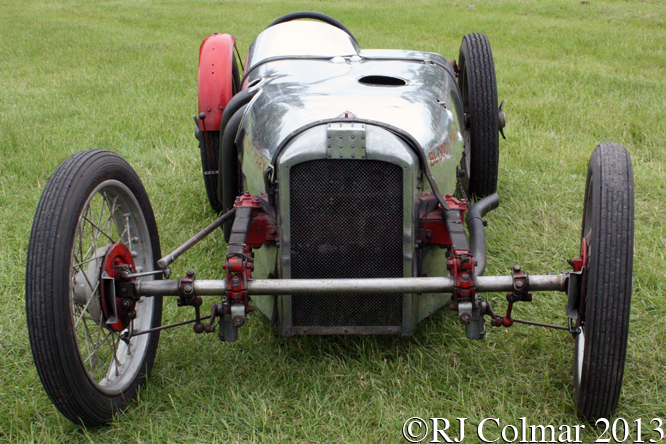
The original front axle had no suspension other than that afforded by the balloon aircraft tyres fitted to the wheels or brakes. The 1914 13 hp vee twin JAP motor, mounted between the center chassis rail and left chassis rail drove a chain attached to the Juckes, motorcycle, gearbox which in turn drove a rubber belt attached to a solid rear axle, carried in a pair of bronze bushes in gunmetal housings sourced from a Grahame White cycle car, mounted below the chassis rails and suspended by quarter elliptic springs. With the driver sitting to the right almost alongside the motor and gearbox the contraption in it’s original guise weighed around 230 kgs / 507 lbs and was said to be capable of 55 mph, and was slowed using “negligible” band brakes on the rear axle.
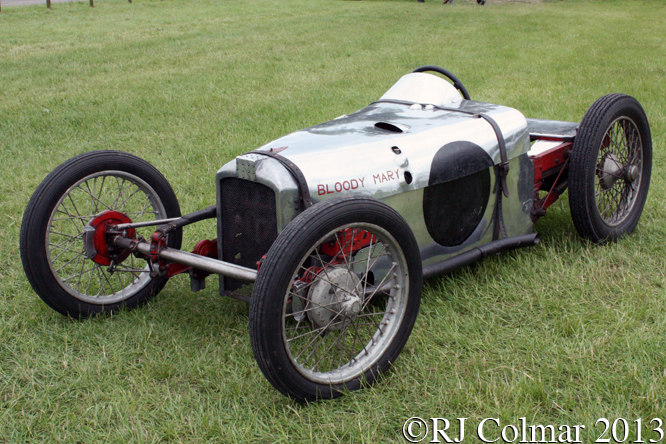
Not having scared them selves sufficiently, over time the car was developed, a GN tube front axle with leaf springs bound with “best quality blind cord” to the chassis replaced the original though again without brakes. The output was more than doubled to over 30hp with the acquisition of a more modern 4 cam JAP vee twin motor which required the rubber final drive be replaced by a chain twixt gearbox and rear axle. A semblance of a body was added along with the name “Bloody Mary” which has been interpreted as a jest against the stuffy preeminent establishment still prevalent in Britain between WW1 and WW2. Described as a determined “bon viver” John would later become well known for his “very blue“, language, after dinner speeches.
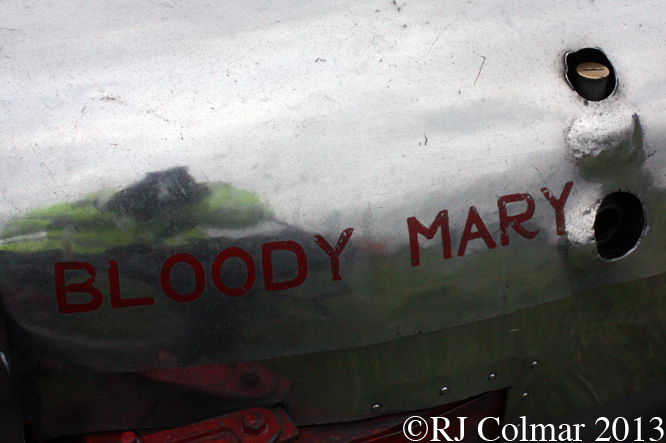
As the boys became undergraduates, John at Oxford and Richard at Cambridge, they started entering the road registered car into speed and trials competitions which meant wiring torches to the mudguards for illumination and obliging the passenger to perch precariously twixt hot exhaust to the front and above the rear chain. After finally scaring himself in Bloody Mary Richard eventually went on to build a second GN based special of which John said “owing to some oversight on the part of the licensing authorities, both cars had the same registration number” meaning care was taken that the two specials were never seen together.
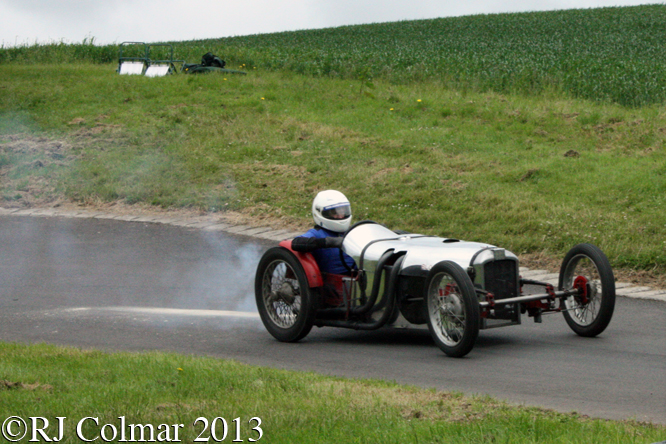
John persevered with Bloody Mary fitting a new tubular front axle carrying 1928 vintage Austin Seven brakes and wheels. After two unfortunate “wild” young men fell off their Brough Superior motor cycles John replaced the 4 cam JAP which had given as much as 40 hp after much development, with first one over head valve KTOR JAP motor and fitted the second when it unexpectedly also became available using an ingenious spring loaded sprocket to compensate for firing irregularities between the two motors. In order to avoid back fires which would destroy the drive train John always needed four strong blokes to give him a push start, it was a tribute to Johns good standing in the paddock that he never had a shortage of volunteers.
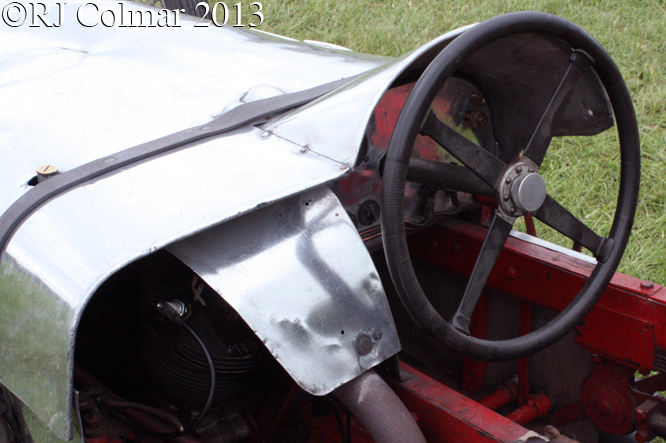
On his first outing at Lewes Speed Trials in the now twin engined junk yard special the hubs burst as John was accelerating, while John fought to control the car through a series of wild slides he switched off the motors and coasted over the line with a time fast enough to win his class. The hubs were subsequently replaced with sturdier Frazer Nash items and in 1937 John was just a shade over 3 seconds slower than Raymond Mays’s supercharged ERA R4B up the Shelsley Walsh Hillclimb, a performance described in one contemporary report as ‘a miracle of wheel-winding’. At this point John retired Bloody Mary to build a new, faster, special with independent suspension augmenting the two JAP engines from Bloody Mary with two more to fashion beast with four JAP vee twins.
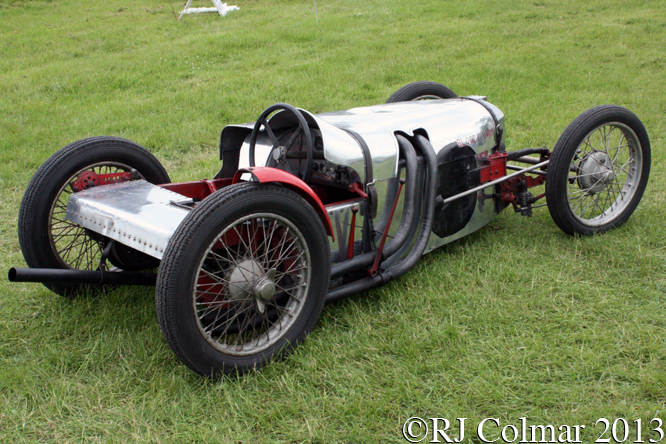
After the 1939 – 1945 war, in which half brother Richard lost his life serving in the RAF over Germany, John rebuilt Bloody Mary and from 1948 to 1953 he held the VSCC course record at Prescott with the machine in which he sat a mere 5″ off the ground. As Bloody Mary was becoming increasingly less competitive John’s competition driving career came to an end after a major accident in a race at Silverstone while driving a borrowed ERA.
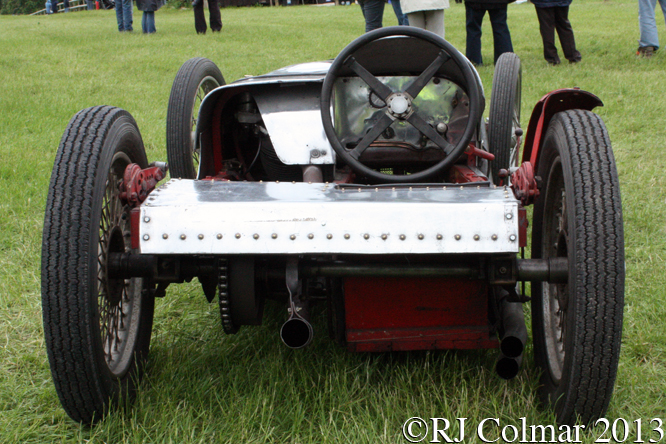
John became a well known author one of his most popular books was called “Specials” and journalist with Autosport Magazine, he never used a type writer preferring to use Biro and paper as the tools of his trade. His activities included commentating on motor racing events for the BBC and in a similar role he was immortalised on film with a cameo role in the comedy The Fast Lady.
Bloody Mary eventually found it’s way to the National Motor Museum with ownership passing to his widow Rosemary Bolster upon John’s death in 1984. The car is seen in these photo’s at the 5th Tony Marsh Memorial Weekend run at Gurston Down earlier this year.
Thanks for joining me on this “Schoolboys And A Handrill” edition of “Gettin’ a li’l psycho on tyres”, I hope you will join me again tomorrow. Don’t forget to come back now !


